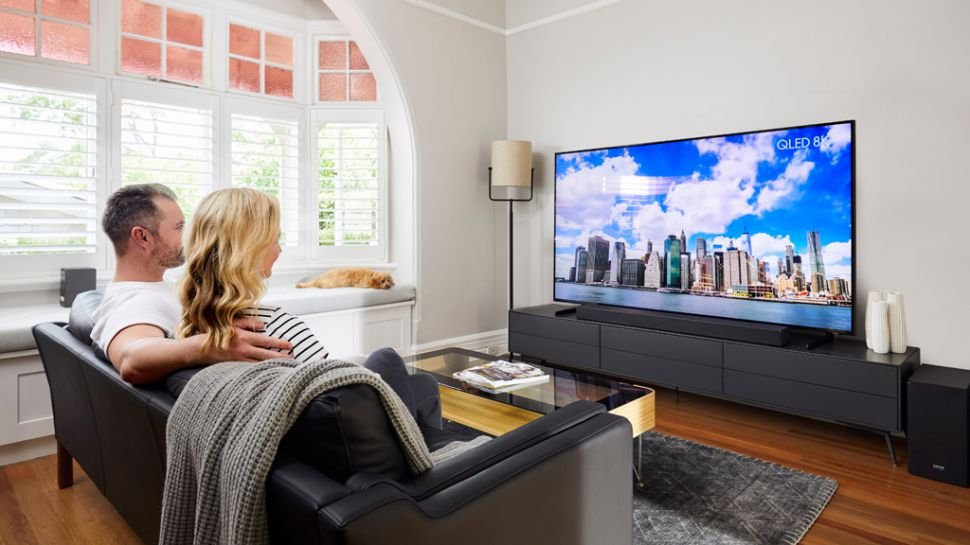
Much has been said about 5G as the future of mobile technology. After all, this is the natural next step after 4G, and it promises to be much faster than anything we've seen before. We're not just talking about gradually increasing speeds, as it's been suggested that 5G would be 100 times faster than standard 4G. So far this seems to be the case, but how will this help the average user? Especially in the case of the smart home, 5G technology has the potential to be game-changing. In other words, if you stick to the hype and speculation that's already raging while we wait for the launch of 5G devices. The smart home is an environment in which more and more people live, a family that, in addition to owning laptops and smartphones, also contains Internet of Things (IoT) devices, ranging from smart speakers like Amazon. Echo smart bulbs and smart locks, all-in-one devices like the Google Home Hub. Connected devices are a great way to streamline your work at home, but they're also limited due to speed restrictions and other issues. Could 5G be the savior that makes the smart home more attractive to everyone?
 Image Credit: Shutterstock
Image Credit: Shutterstock
Faster and more efficient smart devices.
It's important to know that 5G isn't just faster. He is also much more efficient in his way of approaching things. It offers lower latency, which speeds up response times, and is generally smarter. It can simultaneously handle more users than 4G due to its ability to coexist with other wireless signals without the risk of interference. 5G operates in three different spectrum bands, which means it can be as fast as it needs to be, depending on the device you're connected to. This frees up capacity for users in busy areas and reduces slowdown at peak times. The bad side? Higher band spectrums also require a clear, direct field of view to the mast in question. This means that cities will need to install more 5G masts compared to how 4G has been applied in the past. Potentially, we all may need an antenna or hub at home to get the most out of the service. However, being able to handle so many different connections at once is a huge advantage for 5G. Wireless connections are constantly being requested by many different sources at the same time, and often the overload from different users and devices is a major bottleneck to receiving high-quality service. Look around your house. How many devices are already using a wireless connection in one way or another? Your TV, game consoles, smartphones, smartwatches, tablets, and laptops are likely to depend on a powerful wireless connection to function effectively. But what if you add a smart speaker or hub to the mix? Or a smart bulb system? Or locks? The list is almost endless these days, even with large appliances like refrigerators or microwaves with built-in smart home technology. Image Credit: Shutterstock.com During setup, many of these devices create their own Wi-Fi network before switching to the main home network. Others rely on Bluetooth for the first steps of setup. In either case, 5G can provide a more consistent form of service, consolidating setup and making it easier to get started. This is the kind of thing that can make smart home technology much more accessible and smarter, thus encouraging more users to adopt IoT. Low latency is another way 5G could significantly improve smart homes. For security camera systems like Ring and Nest, every millisecond counts. Being able to see what's going on outside your home is useful, but only if the response rate means the images update quickly. A 5G connection means a theoretical response rate of 1-2ms compared to a home broadband connection of 10-20ms (best case). This instantly makes a security system more attractive to the homeowner in question. In general, 5G could be far superior to a home broadband connection. Faster, theoretically more reliable, and potentially even cheaper - there are problems to solve first.
Image Credit: Shutterstock.com During setup, many of these devices create their own Wi-Fi network before switching to the main home network. Others rely on Bluetooth for the first steps of setup. In either case, 5G can provide a more consistent form of service, consolidating setup and making it easier to get started. This is the kind of thing that can make smart home technology much more accessible and smarter, thus encouraging more users to adopt IoT. Low latency is another way 5G could significantly improve smart homes. For security camera systems like Ring and Nest, every millisecond counts. Being able to see what's going on outside your home is useful, but only if the response rate means the images update quickly. A 5G connection means a theoretical response rate of 1-2ms compared to a home broadband connection of 10-20ms (best case). This instantly makes a security system more attractive to the homeowner in question. In general, 5G could be far superior to a home broadband connection. Faster, theoretically more reliable, and potentially even cheaper - there are problems to solve first.
 Image Credit: Shutterstock
Image Credit: Shutterstock